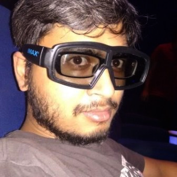|
Tutorial 2: Machine Learning in the Real World
Abstract:
Machine Learning (ML) has become a mature technology that is being applied to a wide range of business problems such as web search, online advertising, product recommendations, object recognition, and so on. As a result, it has become imperative for researchers and practitioners to have a fundamental understanding of ML concepts and practical knowledge of end-to-end modeling. This tutorial takes a hands-on approach to introducing the audience to machine learning. The first part of the tutorial gives a broad overview and discusses some of the key concepts within machine learning. The second part of the tutorial takes the audience through the end-to-end modeling pipeline for a real-world income prediction problem.
The tutorial includes some hands-on exercises. If you want to follow along, you will need a laptop with at least 2 GB of RAM and Firefox/Google Chrome browser installed.
Note that your laptop must be capable of connecting to internet via Wifi or your mobile data connection. We will be using docker containers, so specific software does not need to be installed on laptops.
Bios:
 Vineet Chaoji is an Applied Science Manager within the Core Machine Learning team at Amazon where he leads projects related to econometric models of customer behavior, customer targeting and malware detection. Prior to joining Amazon, he was a Scientist at Yahoo! Labs in Bangalore where his research focused on online advertising and social networks. Vineet obtained a PhD in Computer Science from Rensselaer Polytechnic Institute. He has published at top-tier data mining and database conferences and journals. Vineet has also served on the program committees of leading data and web mining conferences. Vineet Chaoji is an Applied Science Manager within the Core Machine Learning team at Amazon where he leads projects related to econometric models of customer behavior, customer targeting and malware detection. Prior to joining Amazon, he was a Scientist at Yahoo! Labs in Bangalore where his research focused on online advertising and social networks. Vineet obtained a PhD in Computer Science from Rensselaer Polytechnic Institute. He has published at top-tier data mining and database conferences and journals. Vineet has also served on the program committees of leading data and web mining conferences.
 Rajeev Rastogi is the Director of Machine Learning at Amazon where he directs the development of machine learning platforms and applications such as product classification, product recommendations, customer targeting, and deals ranking. Previously, he was the Vice President of Yahoo! Labs in Bangalore where he was responsible for research programs impacting Yahoo!s web search and online advertising products. He was named a Bell Labs Fellow in 2003 for his contributions to Lucent's networking products while he was at Bell Labs Research in Murray Hill, New Jersey. Rajeev was named an ACM Fellow in 2012 for his contributions to large-scale data analysis and management. He has published over 100 papers in top-tier international conferences and 33 papers in international journals. Rajeev has also been a prolific inventor with 57 issued US Patents. He is currently a member of the News editorial board of the CACM, and was previously an Associate editor for TKDE. He has served on over 50 program committees of the leading database and data mining conferences, and was a Program Co-chair for the Applied Data Science track of the KDD conference in 2016, the CIKM conference in 2013 and the ICDM conference in 2005. Rajeev Rastogi is the Director of Machine Learning at Amazon where he directs the development of machine learning platforms and applications such as product classification, product recommendations, customer targeting, and deals ranking. Previously, he was the Vice President of Yahoo! Labs in Bangalore where he was responsible for research programs impacting Yahoo!s web search and online advertising products. He was named a Bell Labs Fellow in 2003 for his contributions to Lucent's networking products while he was at Bell Labs Research in Murray Hill, New Jersey. Rajeev was named an ACM Fellow in 2012 for his contributions to large-scale data analysis and management. He has published over 100 papers in top-tier international conferences and 33 papers in international journals. Rajeev has also been a prolific inventor with 57 issued US Patents. He is currently a member of the News editorial board of the CACM, and was previously an Associate editor for TKDE. He has served on over 50 program committees of the leading database and data mining conferences, and was a Program Co-chair for the Applied Data Science track of the KDD conference in 2016, the CIKM conference in 2013 and the ICDM conference in 2005.
 Gourav Roy is a Senior Software Engineer in the Core Machine Learning team at Amazon where he builds scalable machine learning platforms and applications. He is interested in streaming approximate algorithms and distributed systems. His work on streaming anomaly detection recently got accepted at the International Conference on Machine Learning. Prior to joining Amazon, he got a bachelors degree in Computer Science at BIT Mesra. Gourav Roy is a Senior Software Engineer in the Core Machine Learning team at Amazon where he builds scalable machine learning platforms and applications. He is interested in streaming approximate algorithms and distributed systems. His work on streaming anomaly detection recently got accepted at the International Conference on Machine Learning. Prior to joining Amazon, he got a bachelors degree in Computer Science at BIT Mesra.
|
